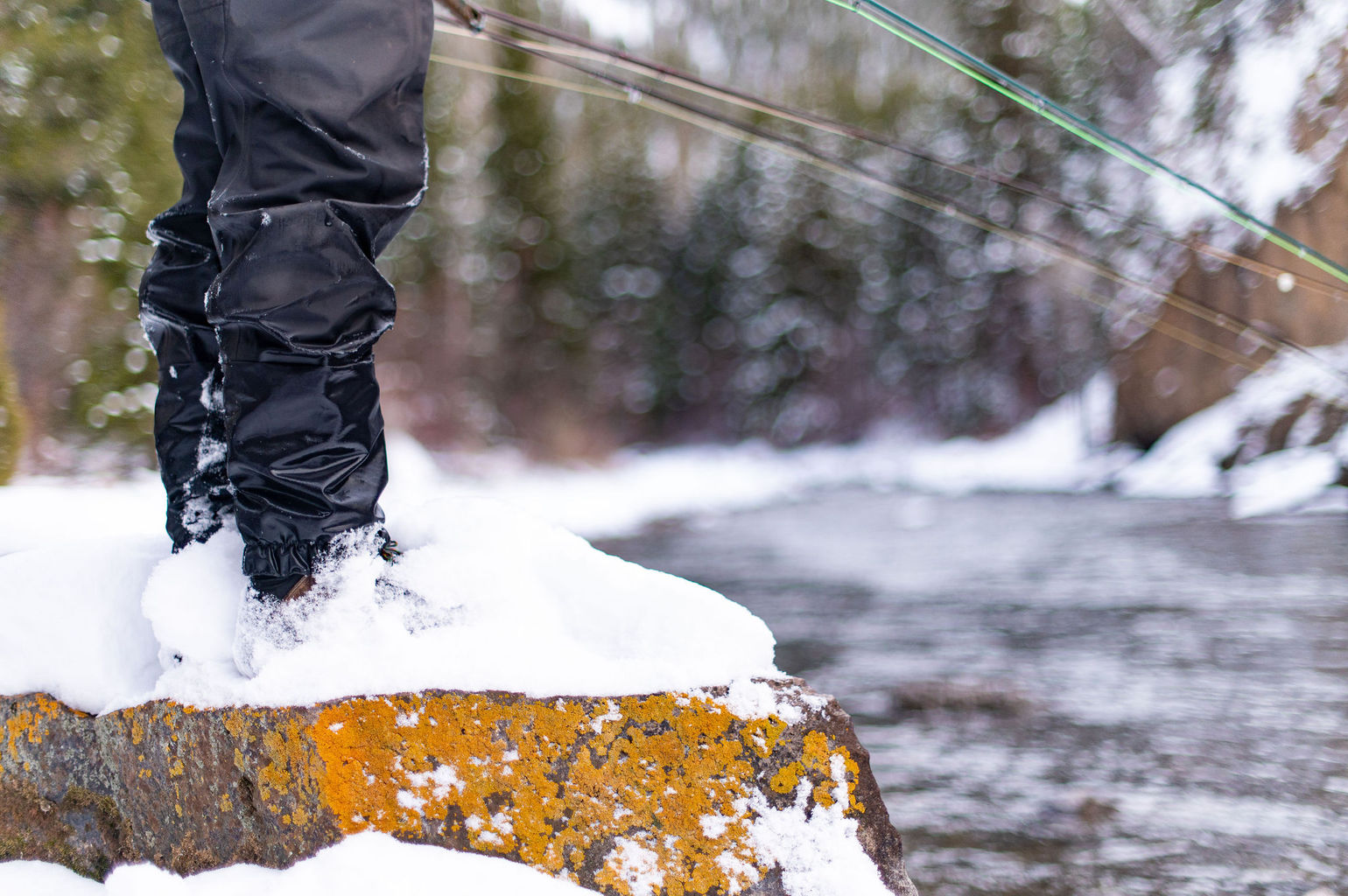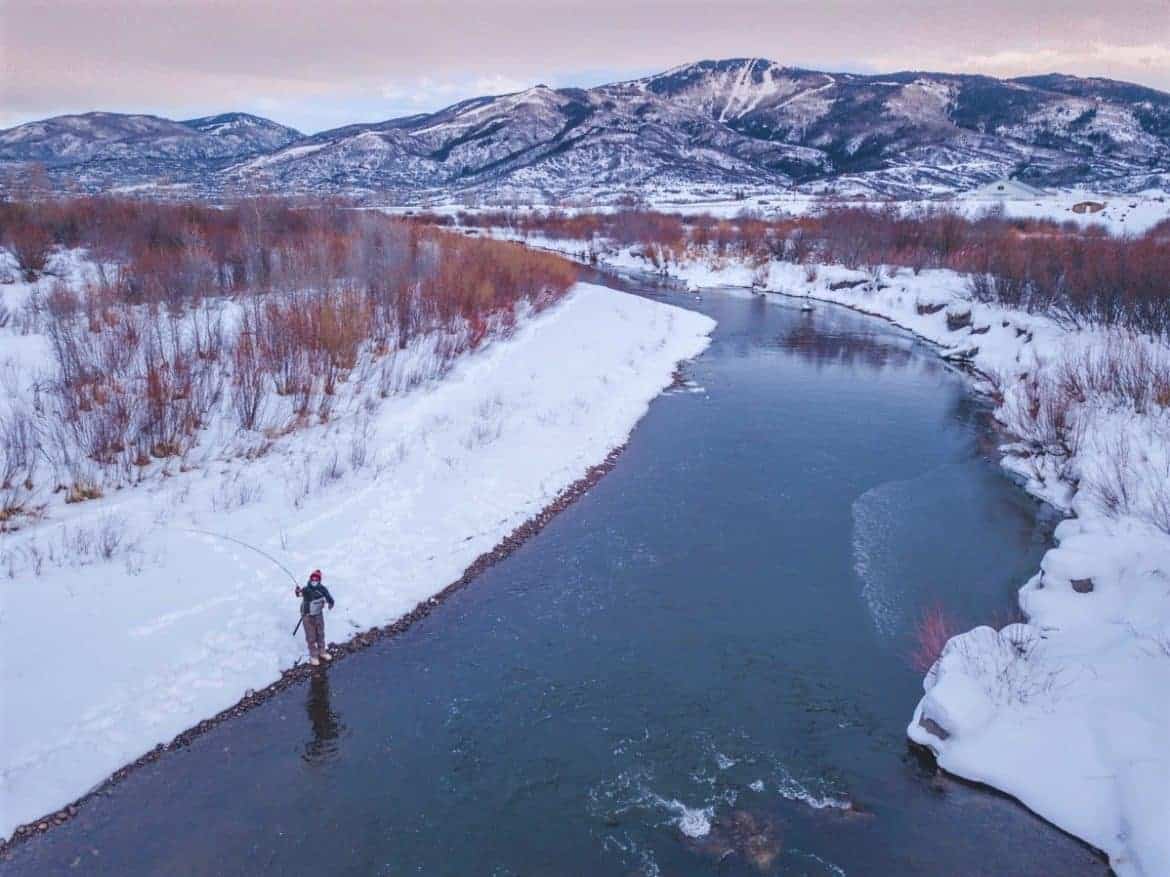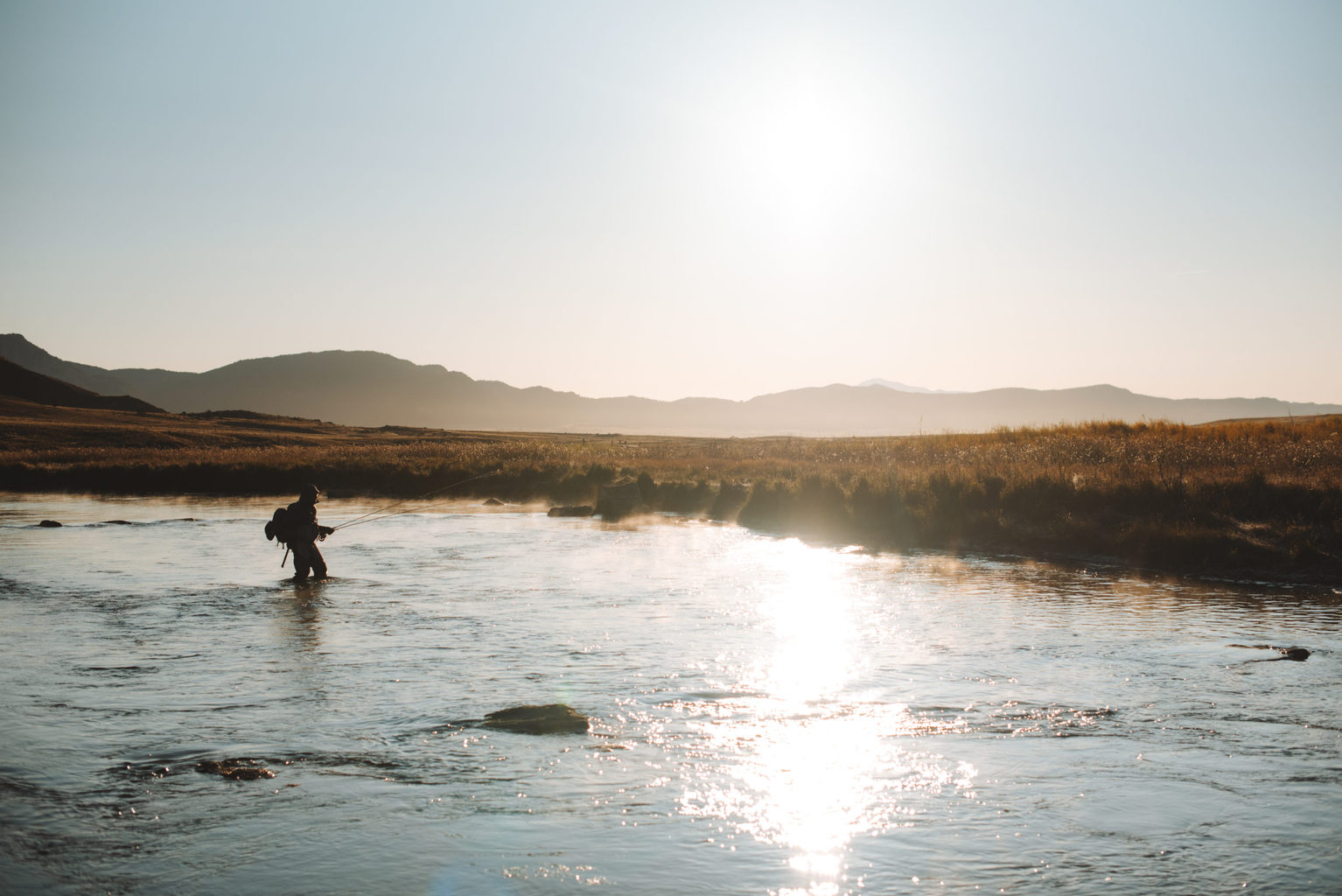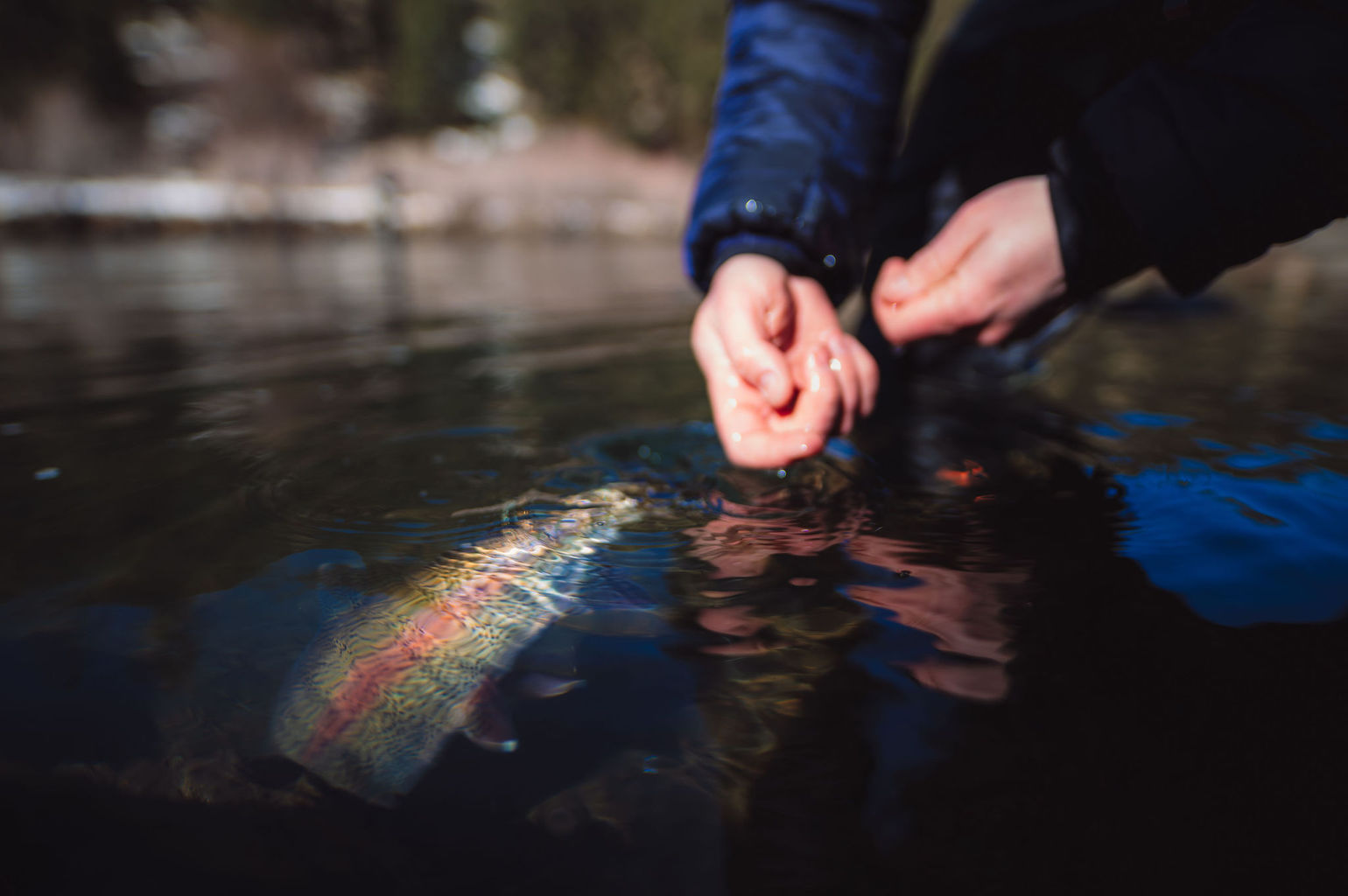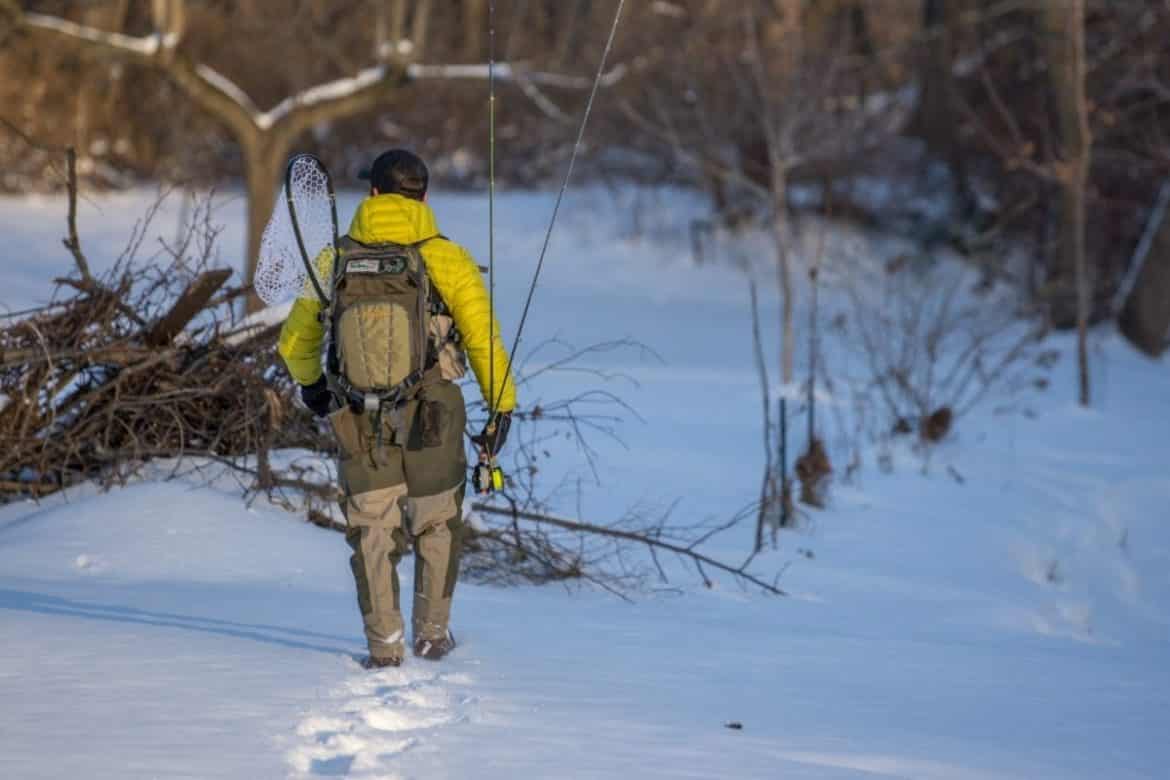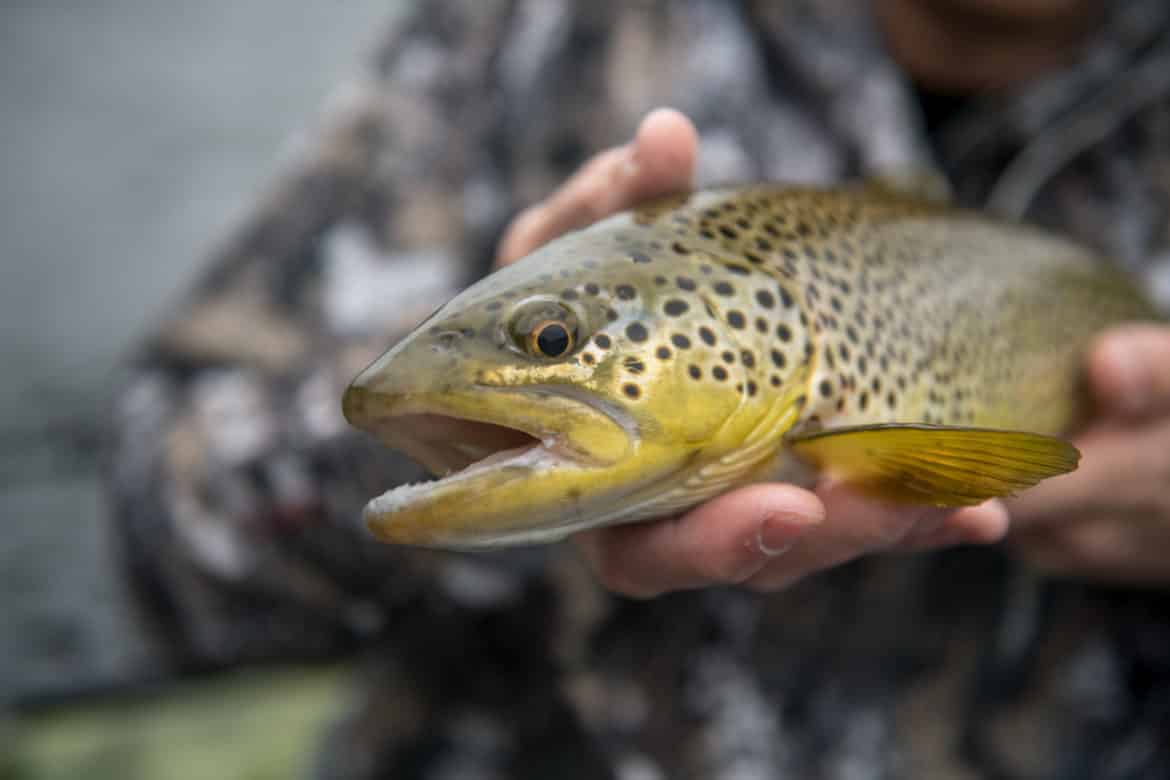Winter Fly Fishing Tips: Trout In The Winter 101
Winter can be a hard time to catch trout, as our cold bloody quarry becomes less active and harder to coax into a bite. However, by using the correct patterns you can continue with your passion for fly fishing year-round.
The major guidelines for winter trout fishing include:
- Is fly fishing good in the winter?
- How cold is too cold for fly fishing?
- Where do trout hold in winter?
- What’s hatching in the winter?
- How should I fish flies in the winter?
- How to find the right water to fish.
- Staying safe.
- What type of flies should I fish?
- Should I fish more than one fly at a time?
- How do I keep my guides from freezing?
- What should I wear to keep warm?
- What flies are the best for winter?
But first, you have to consider your reasons for trout fishing in the winter, and what special challenges and joys come from the pursuit. Initially, you have to come to the realization that winter trout fishing will likely never involve large numbers of fish – the trout simply will not be as active and will not bite as easily. But the joy of winter fishing more than makes up for the difficult challenge. Imagine the complete solitude you will feel when you go to that favorite deep pool that is usually packed with anglers but now is all yours.
You will see unbelievable beautiful sights. The winter cold strips the leaves from trees, opening up wide views of the trout’s wild lair. When it snows, you will see images right out of a postcard – a red cardinal or a blue jay perched on an icy tree branch out in the middle of untouched snow. The ability to get out, exercise, get fresh air, and enjoy nature are always part of trout fishing – and they are the essential elements that balance the cold weather and more finicky fish.
With the right presentation, you can catch fish throughout the entire winter, particularly where water temperatures remain at or above 40 degrees. Finding the correct pattern is the beginning of success.
Is fly fishing good in the winter?
Yes. Fly fishing is still good in the winter in even the coldest trout streams. There are many prolific insect hatches throughout the season that might warrant a dry fly presentation, however, you’re more likely to have success on what’s happening below the surface.
How cold is too cold for fly fishing?
It depends on what temperature you are willing to fish in. There are no regulations or laws that prevent you from fishing in extreme temperatures, but anything below 32 degrees Fahrenheit will cause ice to build up in your guides and line freezing issues.
Where do trout hold in winter?
In the winter trout will move to deeper water to hold in long deep pools and at the base of waterfalls, called a tailrace. These areas will rarely freeze over and provide a comfortable place for trout to feed through the winter.

Matching the Winter Hatch
Just like all the times of the year, matching the natural prey is paramount to success as an angler. In fact, it may be even more important at this time of the year, as the trout will be feeding less aggressively.
Trout winter diets are primarily made up of insects and their larvae. Predominantly, trout feed upon nymphs and full-grown midges and stoneflies. Both insects continue their life cycle through the winter months making them one of the few insects available for trout to prey upon.
Midges continue to breed in large swarms throughout the fall and early winter months. Therefore midge larva, pupa and full-grown adults will be the main source of prey for trout. A midge pattern is always the go-to first choice in the winter until proven otherwise.
Fly Fishing Made Easy 👍
Our Quarterly Fly Club ships 1,000’s of flies to anglers all across the United States. Receive curated fly assortments selected for the season with in-depth articles on how to fish them. Great for beginners to learn and for intermediates to discover new flies.
Stoneflies are unusual because they are on the opposite end of the spectrum. Stoneflies go through a very long metamorphosis process for an insect, lasting several years. Therefore stonefly larvae, pupa, and full-grown adults can all be found in bodies of water throughout the entire year. A stonefly pattern is one of the most successful winter flies.
There are a few other patterns that will work under some conditions. Winter is also a good time to use small worm imitators. Trout will prey upon small worms which wash into the water and float downstream, so red worm patterns are successful.
On occasion, trout will also eat larger prey during the winter months. Large trout will eagerly gobble up a crayfish or a minnow that wanders close to them. However, trout will rarely move far to seek out these prey items. You may be surprised to learn that winter can be a good trophy-sized trout time. These larger fish really don’t want to chase thousands of midges around, and might just be teased into slamming a streamer that floats in front of their face.

Go Small, Go Slow, Go Low
So we know that the trout will be much less aggressive than any other time of the year. They will have a somewhat sedentary existence, moving as little as possible. Therefore, it is really important to use small flies, slow presentations, and drop them right down to the fish.
Dry fly action is not impossible during the winter, but you should see dry-fly hits as a pleasant exception to the winter rule. In the wintertime, you should stick to nymphing almost exclusively – even adding a small split shot when the water is deep enough. The trout will not be surfacing to feed, but rather waiting for their next meal to drift by slowly where they can reach out with little effort.
You are advised to use smaller flies than other times of the year. For midges, small sizes between 18 – 22. You can use slightly larger stonefly imitations around the 14 – 16 sizes. If you are on a body of water where trout are clearly preying on minnows – try a size 8 streamer. Many anglers also slide down a tippet size, with around 5x – 6x the best for winter. This will let the nymph drop lower into the pool.
No matter the fly, try a slow retrieve. Let the nymph sink slowly down into the holes and pockets behind the best structure. Keep in mind that trout will really seek out the best pools – so if you catch one fish try a few more casts in the same spot and you might find a second bite!

Find the Right Water
Finding the right water is just as important as anything else to winter trout success. In the wintertime, the right water means slow-moving water that is relatively warm and stable and temperature.
You can see the clear pattern that the trout are attempting to conserve as much energy as possible. Therefore they will avoid turbulent water which requires more of their power to navigate through. Trout will also avoid shallows to hide from predators – birds, cats, mink, bears, and all sorts of warm-blooded animals will be looking for the sluggish trout. They find safety in deeper pools.
Additionally, trout prefer to eat insects floating by slowly, and not coursing through rapid water – so stay out of fast water or stagnant water. So the best location is a moderately moving stream with enough water structure to provide some quieter water. Rocks of course will work – but many anglers recommend logjams that slow the water significantly to be the best structure. Make sure to look for eddies and deeper pools created behind the structure.
Water that has a consistent temperature, especially if it’s relatively warm, will hold the most trout. The best water is usually spring-fed channels. Springwater actually remains at stable temperatures throughout the whole year. So while this may seem like very cool water compared to sun-warmed summer water, the spring water will likely be above the average water temperature during the wintertime when the ambient water temperature plummets.
Another excellent spot for winter fishing is a tailrace. A tailrace occurs when waterfalls over a dam, water wheel, or other structure. Tailwaters virtually never ice over and push bait downstream to the trout. The water temperature is typically stable and a bit warmer than the rest of the stream, because the tailwater is dumping directly out of the reservoir – and large bodies of water do not cool down as low or fast as a small stream. Flowing tailwater almost never ices over, so it can be fished all winter. Look for the previously mentioned structure and deeper pools slightly downstream of the spillway.
Be Safe
Fishing is an outdoor pursuit and always involves some small safety risks like any other sporting activity. Winter conditions make everything a bit more dangerous, so you should take proper precautions.
Some safety guidelines are:
- Consider fishing from the bank only and not wading into the cold water. If you do wade in, make sure to wear winter graded gear.
- Never walk on ice over a flowing body of water no matter how safe it looks.
- Bring a buddy fishing so you can help keep eachother safe.
- Don’t forget raincoats, hats, gloves, and other accessories.
- Be aware of the fast setting sun – nightfall comes so fast compared to the summertime, and you do not want to get caught out in the woods in the dark.
Overall, winter trout fishing is more challenging than any other time of year – the combination of finicky fish and chilly weather is challenging. But you will have the ability to catch fish consistently if you use the right flies and know the best water to match the behavior of winter fish. Winter is also the most beautiful and peaceful time of year in the wonderful natural areas that trout inhabit. By following these tips, you can make trout fishing a 12-month pursuit.
Winter Fly Fishing Strategies
- Target a specific fish out of a pod rather than fishing blind
- Concentrate your fishing to deep, slow pools
- Focus on fishing from around 10:00 am to about 3:00 pm. This is when trout become most active during the day.
- Best fishing occurs when water temperatures are around 40 degrees Fahrenheit
- Don’t be afraid to switch patterns frequently
- Dead-drift streamers as baitfish are more inactive
Nymphs Are More Productive
First things first, winter is not the time of year to adopt the “Dry Fly or Die” mantra. Now, there is no doubt that dry flies are arguably the most fun way to catch fish, there isn’t an angler out there who doesn’t get an adrenaline rush after watching a trout rise to the surface and aggressive slurp your fly. However, there is a time and a place for all types of fly fishing, from dries to streamers and nymphs. Winter is guaranteed to be most productive when using nymphing techniques.
Nymphing can be extremely effective and relatively easy. By positioning yourself directly across from the fish-if you aren’t able to sight fish, place yourself where the fish are most likely to be feeding, you are setting your flies up to move through the water directly in front of hungry trout. All it takes is roll cast upstream and a proper drift for trout to notice your flies.
Fish Multiple Flies
Trout are significantly less active in the winter which is why it’s a good idea to offer the trout as many delicious food options as possible, this can be achieved by rigging up three flies below a tiny indicator.
Think of this as a juicy buffet line, start your nymph rig with 5x or 6x sized tippet because water in the winter can be low and clear and you don’t want to spook away the chance at a fish. Next, add a very small strike indicator, and micro weight, sometimes two. Add the first fly which should be an attractor pattern such as a San Juan worm. Then below the first fly, add a midge and then a second midge below that. Be sure to keep the heaviest weight midge on the very end, to avoid bird nesting your line.
The other benefit to nymphing 3 flies on a single line of tippet is the ability to try multiple colors and patterns all at once. Then you can dial in the pattern that is producing fish more quickly.

Preventing Frozen Guides
Before your rod even touches the water, spray it down with some PAM cooking spray. Chances are you have some in your pantry and if not you can pick some up for under five dollars at the nearest supermarket. This is a tried and true tactic, that will prevent guides from freezing quickly.
The one thing I never leave home without has major benefits on the water as well, chapstick! Rub a little chapstick on your guides to discourage ice build-up. I prefer either original Burt’s Bee’s or Carmex or any natural based lip balm will do the trick! Loon outdoors makes a non-toxic paste, its safe for the environment as well as your fly line. Just under ten dollars, you can pick up this ice off paste at your local fly shop.


What To Wear
That’s the conundrum for so many anglers during the cold winter months. Sure, the fish are out there and probably willing to eat, but is it really worth it during that snowstorm that brings several inches of snow and freezing temperatures? The answer to that becomes much easier when you’re armed with the right gear and clothing to combat the harsh conditions of winter!
Hands
Of all the things that threaten to end the day early, cold hands and fingers is at the top of the list. The inability to comfortably tie on a new rig and the stinging of frozen fingertips grinds a day of fishing to a halt. During these winter months, I like to bring two pairs of gloves with me. The first pair is fingerless wool, which allows me to stay pretty warm and still maintain a level of function. For those extra cold days, the second pair is a wool mitten that flips down into gloves. When I’m casting, my off hand is in mitten mode for maximum warmth, but it’s still really easy to switch into the gloves for retying or unhooking a fish!
Recommended Reads
- 24 Best Fly Fishing Flies For Trout
- How To Fly Fish Montana: Everything You Need To Know
- How to Fight a Big Fish on a Fly Rod
- The Best Places to Go Fly Fishing in New Mexico
- How to Fly Fish a Woolly Bugger Fly
Feet
Keeping feet warm in winter is the toughest thing to achieve. Numb toes that feel more like blocks of ice than extremities is a miserable feeling, and it’s really hard to combat. When it comes to dressing for warmth, wear two pairs of socks. Typically my bottom layer is just a regular run-of-the-mill athletic sock followed by thick wool socks. Having two layers helps a ton, and walking around out on the stream keeps blood circulating, which is about the best you can do when water temperatures are hovering just above freezing.
Layers
Dressing in layers, and having more layers available in the car, is key to a day out in winter. Weather can change in an instant, and even a few degree drop can be debilitating to the cold weather angler. Companies like Simms make some fantastic layering options that are lightweight and warm. A classic winter layering system for me is a long sleeve tee, fleece quarter zip, hoodie, and then a jacket to cut the wind and, if necessary, repel precipitation. Another jacket, usually a puffy warmer option, extra hoodie, and fleece layer are stashed in the truck just in case it’s colder than anticipated or even worse, a fall in happens.
Our Favorite Winter Flies


1. Hot Head Nymph (Sizes 12-16)
Something about bright orange beads sets fish off in a certain way. It could simply just grab their attention or briefly resemble a drifting egg. We fish this pattern in a tandem-fly rig with this Hot Head Jig trailing as the lead fly (at the bottom) and a more natural presentation like a Zebra Midge or Hare’s Ear Nymph tied in 12-inches above.
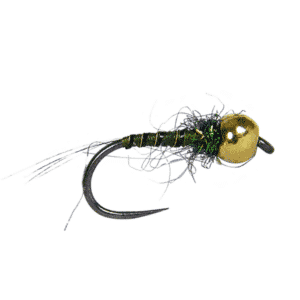
2. Tungsten Missile (Sizes 14-16)
We can’t recommend this fly fishing nymph enough. I, specifically, fish this fly under a football indicator no matter where I go and it always works. When we’re doing a photography shoot for The Fly Crate and I need to land a trout—I tie this fly one and it never disappoints.
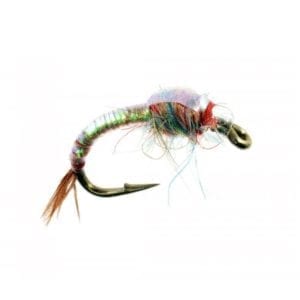
3. Rainbow Warrior Midge (Sizes 16-20)
The Rainbow Warrior midge is one of our favorite searching patterns. We like to throw it in with 1 to 2 other midge patterns on a nymphing rig because it seems to perform better paired with other nymphs.




4. Zebra Midge (Sizes 16-22)
Midge larvae represent more that 50% of a trout’s diet and that increases during the winter months. While you can’t always find adult Midge hatches in New York, larvae are always present.

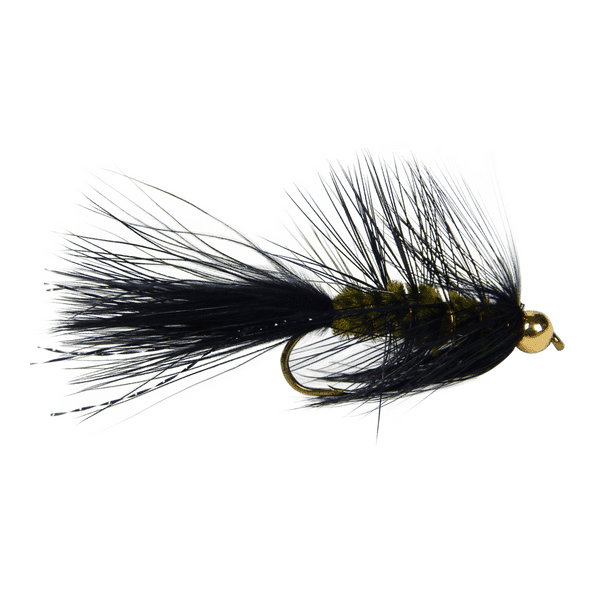


5. Woolly Bugger (Sizes 6-12)
Woolly Buggers are an extremely versatile streamer pattern, so much so that you can practically use it anywhere. The trick is to target only deep pools, get the Woolly Bugger deep, and strip slowly.
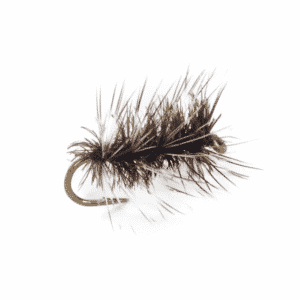
6. Griffith’s Gnat (Sizes 16-22)
In New York, we have many spring fed and tailwater streams that stay a constant temperature nearly year-round. In places like this, you may run into mid-afternoon midge hatches, which will bring trout to rise in slow pools.




7. Jig Squirmy Wormy (Size 12-14)
With New York’s vegetation and limestone rich freestone. streams we have a stable supply of aquatic worms. Pair that with stocked and native trout’s eye for flashy, bright patterns and you’ll have a great time with worm flies.

8. Euro Rubber Prince (Sizes 10-16)
Many streams feature high water and fast currents in deep pools, but the only issue is typical nymphs can’t get deep enough to target the trout hugging the bottom before the fly is swept downstream. That’s where the Euro Rubber Prince fly pattern comes in handy. It not only sports a heavy tungsten bead for diving fast but it offers excellent movement with its rubber fibers.

9. Pheasant Tail (Sizes 12-18)
Can’t deny the classics a spot on this list. Nearly all mayfly and stonefly nymphs have a simple profile and shape that the Pheasant Tail nymph can imitate. Whether you decide to fish the beadless Pheasant Tail nymph, the flashback Pheasant tail, the soft-hackle Pheasant tail, or the beaded version, it won’t likely disappoint.
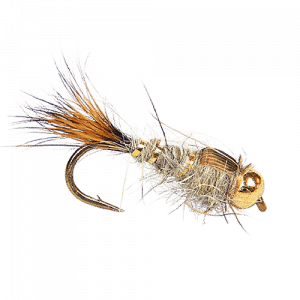
10. Hare’s Ear Nymph (Sizes 12-18)
Probably the most natural imitation of mayfly and stonefly nymphs, the Hare’s Ear nymph is great for targeting trout all across the United States and New York when you’re not quite sure what’s working.
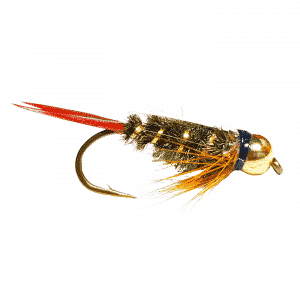
11. Prince Nymph (Sizes 12-18)
The Prince Nymph is one of the best attractor nymph patterns ever created. I, personally, love to fish one of these in a size #18 in my multi-nymph rigs. While I’ve had great fortune in larger sizes, the majority of the nymphs remaining in the streams during winter are quite small.


12. Newbury’s Dirty Hipster (Sizes 12-18)
A flashy jig pattern designed by a western biologist, this pattern earned its spot on this list. Numerous times have I fished this pattern and landed trout on the first or second drift.



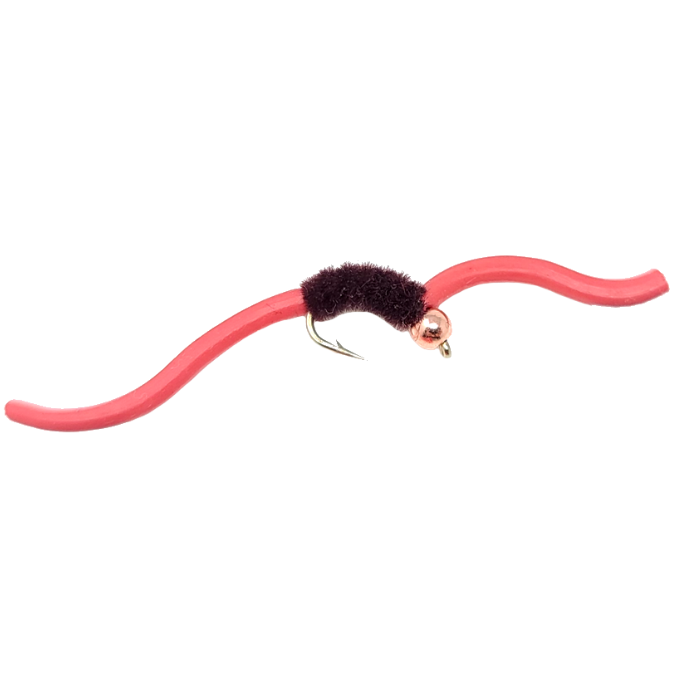
13. Squirmy Wormy (Size 12)
Looking to target large pods of trout in deep pools or even prospecting for trout? Give the Squirmy Wormy a shot. While the material is quite delicate, you can’t discount his naturally rubbery appeal and squirmy nature. Even the slightest disturbance with cause this wormy fly to wiggle and squirm.




14. Egg (Size 14)
Fish eggs are packed with protein and fish know it. During the spawning seasons, trout will go out of their way to swim below spawning beds of other trout, chub, white fish, etc. and feed on eggs that were swept downstream from their nests. Even during the off seasons, trout will opportunistically take egg patterns during the winter season. If you’re into tight-line nymphing, check out this jigged egg.
Fly Fishing Made Easy 👍
Our Quarterly Fly Club ships 1,000’s of flies to anglers all across the United States. Receive curated fly assortments selected for the season with in-depth articles on how to fish them. Great for beginners to learn and for intermediates to discover new flies.

